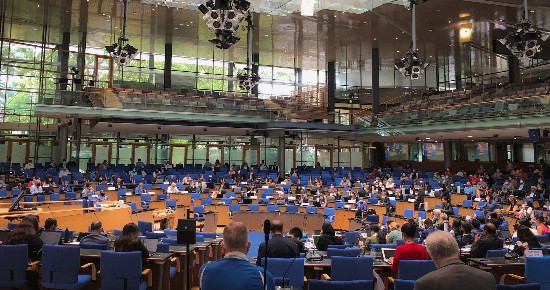Before I get you to read what follows, a full disclosure. I am a member of the Citizens’ Climate Lobby (CCL), a community-empowered organization formed to educate and influence governments and the business community to address global warming. Citizens’ Climate International is the umbrella organization for CCLs in nations around the world. We are dedicated to achieving climate change mitigation through dialogue with those who have the means to implement legislation and programs that can keep the Earth’s climate from overheating. By disclosing this I am telling you I have skin in the game.
At a recent meeting of Citizens’ Climate International’s Earth Diplomacy Leadership Initiative workshop, attendees described the current state of our ability to bend the carbon curve to mitigate the impact of greenhouse gasses on global climate. Despite the annual COP meetings to create consensus and a world response to a growing climate crisis, the overwhelming conclusions from experts were not encouraging.
With the onset of the next El Niño already in play in the Pacific Ocean this year, over the next two years, the world will see a mean increase since the onset of the Industrial Revolution of 1.5 Celsius (2.7 Fahrenheit) in global atmospheric temperature.
A decade ago that number seemed far away. At the Paris COP 21 meeting in 2015, 196 countries agreed to put in place programs and policies to keep warming to no more than 1.5, and in the worst-case scenario, 2.0 Celsius (3.8 Fahrenheit). It was thought then that there was wiggle room of 15 to 20 years before 1.5 would be reached. The different scenarios at the time between 1.5 and 2.0 were well described by climate scientists and the picture of the latter was seen as significantly more threatening than the former.
In the recently completed workshop, the attendees heard that the International Monetary Fund (IMF) has identified macroprudential risks related to climate disruption. What does the term macroprudential mean? It refers to one or more measures designed to give a financial system greater resilience in the face of economic shocks including those resulting from climate change. The IMF recognized that national budgets and economies would be at greater risk and in need of IMF assistance and programs if temperatures rose 2.0 Celsius and stated a need to build an understanding of what the real risks, harm and costs would look like in a future under such a scenario.
Other insights, recommendations and conclusions from this workshop included:
- A recognition that national and global plans to mitigate climate change have been inadequate. We now know that the 1.5 Celsius rise in atmospheric temperature is baked in and that an overshoot of that rise will entail the need to rethink existing programs and policies necessitating significant readjustments.
- Many countries, mostly in the Global South, are already feeling climate disruption leading to destruction and rising debt. For many living in these nations, climate change is causing significant cost increases. Programs for debt relief, therefore, are needed not just for entire countries facing the climate threat, but also for the people of those countries.
- Finance ministries and central banks have to get their acts together through policies and programs to reduce the harm and cost of climate change and support real-world climate resiliency.
- The financial and banking industry needs to develop clear risk guidelines for climate change, natural disasters, and technological transitions. Banks need to end their support of industries and companies that contribute to the ongoing climate threat. The U.S. Commodity Futures Trading Commission and Financial Stability Oversight Council have recognized the structural threat to the financial sector from a changing climate. It is hoped that the sector itself is equally cognizant of the risks.
- Industry and businesses need to develop open and transparent credible, active and verifiable net-zero emission goals and programs.
- Governments should adopt integrated and holistic climate policy planning to create domestic efficiencies and more productive international cooperation with faster timelines for implementation.
- Nature restoration, conservation, and effective investments in adaptation and resilience are needed to optimize national and international climate change strategies. Governments should be adopting integrated and holistic approaches to national economic development and value creation based on an understanding of climate impacts.
- Small states, and low and middle-income countries, have to engage large economies to agree to a higher ambition and faster timelines than they could conceive on their own for implementing climate resilience policies.
- The upcoming SB58, the Subsidiary Body for Scientific and Technological Advice and the Subsidiary Body for Implementation of the United Nations Framework Convention on Climate Change (UNFCCC) is taking place in June. COP28 is scheduled for December. At both of these global meetings, there needs implementation of a strategy for worldwide climate-safe human development addressing food security, international trade, and national economic development, in line with maximum global heating of 1.5 Celsius degrees with as little as possible climate-related harm and cost, including for those populations and countries most vulnerable.
















